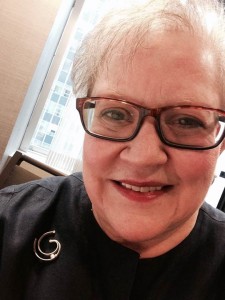
According to the 2017 Disability Equality Index (DEI), a survey conducted by the U.S. Business Leadership Network (USBLN) and the American Association of People with Disabilities (AAPD), U.S. businesses are becoming increasingly accessible for people with disabilities. Can the same be said about business events? Convene asked Joan Eisenstodt, who as chief strategist for her firm Eisenstodt Associates consults on event design.
Has there been improvement in recent years in accommodating meeting attendees with special physical needs?
Not even remotely, and it’s not just in sessions. In receptions, the music may be so loud that few people can hear. The lighting is so low that it’s hard to see, which is also a safety issue. The food is stunning, but people with arthritis or who are short or who use an electric scooter — like me — can’t reach it. And that’s not even getting to hotel-room or bathroom issues. We need to broaden our thinking about our audiences and not say, “Oh, we don’t have anyone with a disability.” How do you know —or that you won’t by the time of the meeting?
What are the top three things you recommend event organizers do to make their events more inclusive for people with mobility or other challenges (sight or hearing, for instance)?
1. Read the U.S. Department of Justice resources on making meetings accessible.
2. Do site inspections using a mobility scooter or an eyepatch or earplugs yourself. Find the obstacles and figure out how to get around them. It’s always eye-opening.
3. Ask [prospective attendees], “What do you need to fully participate?” The hospitality industry should go above and beyond what anyone else would do. Work with the catering department so food is labeled, food tables are low enough, the seating isn’t just high tops so everyone can take part in a conversation. A lot of groups set aside space for wheelchairs and scooters, but people want to sit where they like; you’re not supposed to be “separate but equal.” There are guidelines out there, but bizarrely, our industry is just becoming aware of them.
Can you share how one event you attended did an especially good job of making all people feel welcome and looked after?
Not really. I know what Disabled American Veterans does for its site inspections, so I would guess they’re good at accommodations. The Registry of Interpreters for the Deaf has specific things in its contract, such as bringing in certified interpreters to explain to all hotel staff how to communicate with someone who’s deaf or hard of hearing. Because it’s contracted, hotels do a good job in that one area. Do they do a good job for other people? I can’t answer that.
In your experience, do registration forms cover all the bases in highlighting particular needs? Do event organizers follow up to make sure those individuals are taken care of?
The wheelchair is the universal symbol for disabilities, so that’s on the form. People check the box, and the form says, “How should we contact you for details?”— that’s the right way to do it. I don’t know if organizations are doing a good job at following up. When I’m a speaker, my needs are accommodated to the extent that they can be. I’m worried, though. We’re hearing that the [Americans With Disabilities Act] may be watered down more. And in social media and industry-discussion groups, people are asking, “It’s going to cost $X to accommodate Y — do I really have to do it?”
How would you respond?
Think of the return. If I know I’m going to be more fully accommodated at your meeting, I’m going to go there rather than a competing meeting. Why would we not want to accommodate people if we know we can get loyal members and participants? There’s a lot that can be done that doesn’t cost much, and part of it is attitude. Loyalty comes when people feel welcome.



